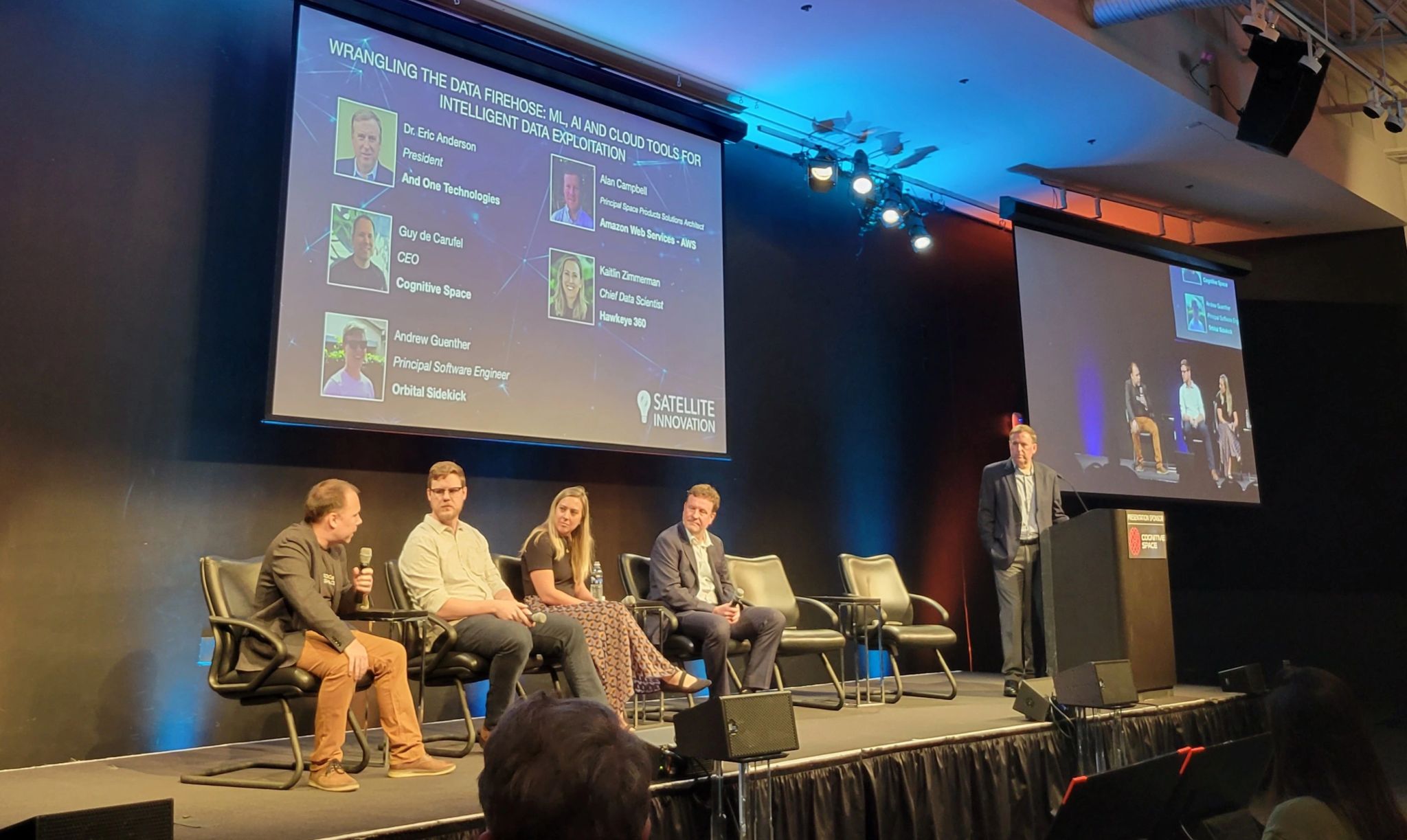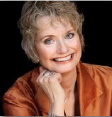Highlights from Satellite Innovation 2023
by Elisabeth Tweedie, Associate Editor
Mountain View, Calif., November 1, 2023--As would be expected a broad range of topics were discussed at the Satellite Innovation held from October 21-22 in Mountain View, California. These included Direct-to-Device (D2D), low earth orbit constellations (LEOs), supply chains, orbital debris, in-space servicing and manufacturing (ISAM) and big data. A couple of key topics that cropped up in several panels, and stood out for me, were D2D and ISAM. The former because opinion was sharply divided and the latter because it is a relatively new segment. In addition, two keynotes, one from Jessica Rosenworcel, FCC Chairwoman and the other from Katherine Gizinski, CEO, River Advisers (formerly known as ManSat) were particularly interesting.
 D2D was first mentioned in the opening session “Review of 2023 and Outlook for 2024.” One of the poll questions was “In the upcoming year (2023-4) which innovation will drive the most growth in the space economy. 49% of the audience chose “Space-based telecom.” Don Claussen, CEO, ST Engineering iDirect, vehemently disagreed, saying. “it (space-based telecom) shouldn’t be up there….. if we’re talking about driving growth. There is a place for it, but we don’t know what the number is.” In a similar vein during a later panel Dr. Anton Monk, VP & CTO Wireless Initiatives, Viasat commented that estimates of the size of the D2D market varied from US$3-40 Billion “Camping needs are not going to fill that market, just how much do people want to connect when they are out of coverage?”
D2D was first mentioned in the opening session “Review of 2023 and Outlook for 2024.” One of the poll questions was “In the upcoming year (2023-4) which innovation will drive the most growth in the space economy. 49% of the audience chose “Space-based telecom.” Don Claussen, CEO, ST Engineering iDirect, vehemently disagreed, saying. “it (space-based telecom) shouldn’t be up there….. if we’re talking about driving growth. There is a place for it, but we don’t know what the number is.” In a similar vein during a later panel Dr. Anton Monk, VP & CTO Wireless Initiatives, Viasat commented that estimates of the size of the D2D market varied from US$3-40 Billion “Camping needs are not going to fill that market, just how much do people want to connect when they are out of coverage?”
Joseph Anderson, VP Space Logistics, Northrop Grumman has probably been in the ISAM market the longest. Northrop Grumman’s Mission Extension Vehicle (MEV) was first discussed in this magazine in 2011, when, several mergers ago, it was known as Vivisat MEV. Anderson reported that there are now two MEVs in orbit, these have extended the life of two Intelsat satellites by a total of six years, now Northrop Grumman is working on a second generation vehicle that will be able to install augmentation devices onto satellites that were not designed to be serviced, do basic repairs and satellite relocations. This will launch in 2025. On the manufacturing side Orbital Composites, a startup, is planning to manufacture antennas, very large antennas, “kilometer sized antennas” in space. JPL are also planning manufacturing in space, so that a hosted payload could be added post launch. As for the size of the market, panelists expect it to be very large, particularly if deorbiting LEOs is considered part of the ISAM market.
Most of us realize that the US is a leading player when it comes to space. Jessica Rosenworcel, Chairwoman FCC, really put this into context when she pointed out that the US investment in space now exceeds that of all other governments combined. In addition, the US has ten times more space focused companies than any other country. Space is now the fastest growing segment of communications technology and right now there are filings for 56,000 new satellites with the Commission, double the number of applications filed just four years ago. There are also many applications for novel space services, including lunar landers, space tugs and antenna farms.
In order to deal with this onslaught, a new Space Bureau, led by Julie Kearney has recently been created. This bureau is designed to support US leadership in the space economy. One of the key achievements of the Space Bureau, has been to streamline the rules for the application process, and kick-off a transparency initiative which includes publishing rules, and videos online, in order to make it easier for new companies to enter the market. Another initiative is investigating what it can do to mitigate orbital debris. This is a particularly important subject not only for our industry, but for the world. In poll taken during another session, 71% if the audience believed that “orbital incidents are likely to radically change the ability to use space in our lifetime.” To this end, the rules for deorbiting an end-of-life LEO have been changed to five years from 25 years and action has already been taken against a company that failed to meet its deorbit commitments.
The World Radiocommunications Conference (WRC), will take place from November to December in Dubai, so this was a perfect time to hear insights from Katherine Gizinski. River Advisers, are the leading experts in spectrum policy and allocation for our industry. She opened her talk by referencing back to the points made by the FCC Chairwoman about the size of US investment in space. Then pointed out that nevertheless, when it comes to spectrum allocation, the US gets only one vote, in common with the other 192 countries that will participate in WRC-23. She went on to discuss how spectrum influences everything and everyone involved in satellite communications. Whether a company is making ground equipment, operating a satellite or providing a service, the frequencies that can be utilized will impact where best to spend the R&D budget, which markets can be addressed and long-range business plans.
Every country participating in the WRC has two objectives: protect the spectrum they have and increase it if possible. Spectrum is a finite resource and the competition is not just other satellite operators, it is also mobile network operators (MNOs) and fixed wireless operators. Almost by definition, satellite is not a national business, so it is particularly important for the industry to gain the support of other countries, regionally or globally when defending or requesting spectrum. The WRC only meets once every four years, so the time between conferences is the time for working groups and behind the scenes discussions and negotiations to arrive at a cohesive strategy for the next WRC. Items on the agenda for WRC-2023 that impact the satellite industry include: new applications in existing satellite bands, improving satellite procedures and additional spectrum in Region 2 (the ITU divides the world into three regions. Region 2 primarily covers the Americas and Greenland).
An important part of Space week, is the Society of Satellite Professionals International (SSPI) Future Leaders’ Celebration, where the “20 under 35” honorees are recognized. These are employees or entrepreneurs who have demonstrated initiative, creativity and problem-solving skills that created new capabilities, overcame major challenges, and ensured excellence in technology and service. It was interesting to note that this year, 12 of the 20 were ladies. The three top-ranking Future Leaders, on the list were also ladies, and these were honored with a Promise Award, recognizing their status as leaders of the 2023 cohort. These were: Bhavi Jagatia, an Astrodynamics Engineer at Planet; Onyinye Nwankwo, a scientist in the field of upper atmospheric and space sciences, currently pursuing her PhD in Climate and Space Sciences and Engineering at the University of Michigan. Previously, Nwankwo was a Scientific Officer with the Center for Atmospheric Research, National Space Research and Development Agency (CAR-NASRDA) in Anyibga, Kogi State, Nigeria; and Julie Newman, Program Chief Engineer for Satelit Nusantara Lima N5 (SNL), a major geostationary communications satellite program, at Boeing. At the same ceremony Debra Facktor, Head of US Space Systems, Airbus US Space and Defense, was honored as “Mentor of the Year.”
Times are definitely changing. Three female Promise Award winners, more ladies than men recognized as future leaders. The first female Chairwoman of the FCC (there has been a previous Acting Chairwoman). It’s worthwhile mentioning whilst on this subject, that the current Secretary General of the ITU is Doreen Bogdan-Martin. This marks the first time that the ITU has been led by a woman since its formation in 1869. Hopefully, in a few years’ time, none of this will be remarkable. Leadership of our industry will be equally divided between the sexes.
 Elisabeth Tweedie has over 20 years experience at the cutting edge of new communications entertainment technologies. She is the founder and President of Definitive Direction (www.definitivedirection.com), a consultancy that focuses on researching and evaluating the long-term potential for new ventures, initiating their development, and identifying and developing appropriate alliances. During her 10 years at Hughes Electronics, she worked on every acquisition and new business that the company considered during her time there. She can be reached at etweedie@definitivedirection.com
Elisabeth Tweedie has over 20 years experience at the cutting edge of new communications entertainment technologies. She is the founder and President of Definitive Direction (www.definitivedirection.com), a consultancy that focuses on researching and evaluating the long-term potential for new ventures, initiating their development, and identifying and developing appropriate alliances. During her 10 years at Hughes Electronics, she worked on every acquisition and new business that the company considered during her time there. She can be reached at etweedie@definitivedirection.com





